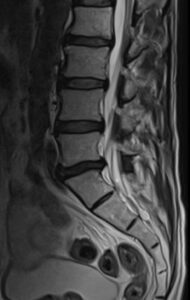
Dr. Petya Stefanova
Teacher
Assistant at the Faculty of Medicine at Sofia University and resident physician in Neurology at Sofiamed University Hospital.
Въпроси
Резюмета
Видеа
Аудио
What is the most common reason for the visual defect shown on the picture?
октомври 13, 2023
Which brain area is primarily responsible for processing visual information received from the optic nerve?
октомври 13, 2023
The patient on the picture is looking straight ahead. What is pathology observed?
октомври 13, 2023
Коя комбинация от симптоми описва най-точно Паркинсоновия синдром:
септември 28, 2023
What are some of the tests typically performed during a neurological examination to assess coordination?
септември 28, 2023
When performing the Romberg test patient stands still with eyes open but sways when eyes are closed. What is the interpretation?
септември 28, 2023
Сухожилните рефлекси при Паркинсонов синдром са:
септември 28, 2023
A patient undergoes the Romberg test, and he cannot maintain balance with eyes open and eyes closed. What is the Romberg test interpretation?
септември 28, 2023
Кои от изброените са хиперкинетични екстрапирамидни синдроми?
септември 28, 2023
How is the finger-to-nose test for coordination typically performed in a neurological examination?
септември 28, 2023
Липсата на кое вещество се свързва с развитието на Паркинсонов синдром?
септември 28, 2023
What is dysmetria in the context of a neurological examination?
септември 28, 2023
What are the key components of the extrapyramidal system in the brain?
септември 28, 2023
What is the correct interpretation if during the finger-to-nose test the patient’s tremor increases in amplitude as finger approaches the target?
септември 28, 2023
What is spasticity in the context of neuromuscular disorders?
септември 28, 2023
What best describes disdiadochokinesis in the context of a neurological examination?
септември 28, 2023
What does the “cogwheel sign” typically refer to in a clinical context?
септември 28, 2023
What is nystagmus in the context of a neurological examination?
септември 28, 2023
Which of the following statements best describes parkinsonism?
септември 28, 2023
Parkinson’s Disease Differential Diagnosis Questionnaire
октомври 18, 2024
Role of the Direct and Indirect Pathways in the Extrapyramidal System: Balancing Motor Control
октомври 14, 2024

The Unified Parkinson’s Disease Rating Scale (UPDRS)
октомври 11, 2024
Lewy Body Dementia with Parkinsonism versus Parkinson’s Disease
октомври 11, 2024

Protective Factors for Parkinson’s Disease: Physical Activity, Smoking, and Caffeine
октомври 6, 2024
Alpha-Synuclein vs. Tau Protein: A Comparative Overview
октомври 6, 2024
Diet Recommendations for Patients with Multiple Sclerosis
август 6, 2024
Wallenberg Syndrome (Lateral Medullary Syndrome)
август 6, 2024
No videos found
Fake Smiles, Real Damage: How Digital Joy Breeds Fear and Anger
май 3, 2025
Understanding Neuropsychological Evaluations: What to Expect
февруари 25, 2025
Невропсихологическо изследване – индикации, провеждане и резултати
февруари 24, 2025
Невропсихологическо изследване – индикации, провеждане и резултати
февруари 24, 2025





